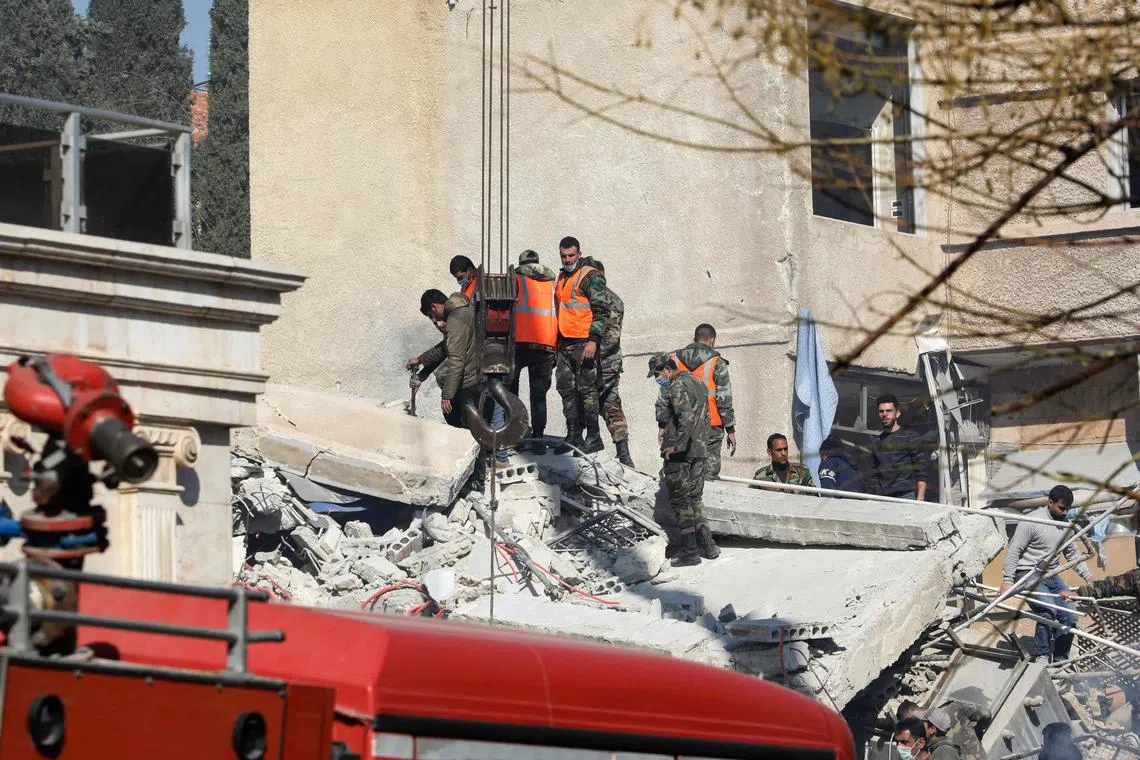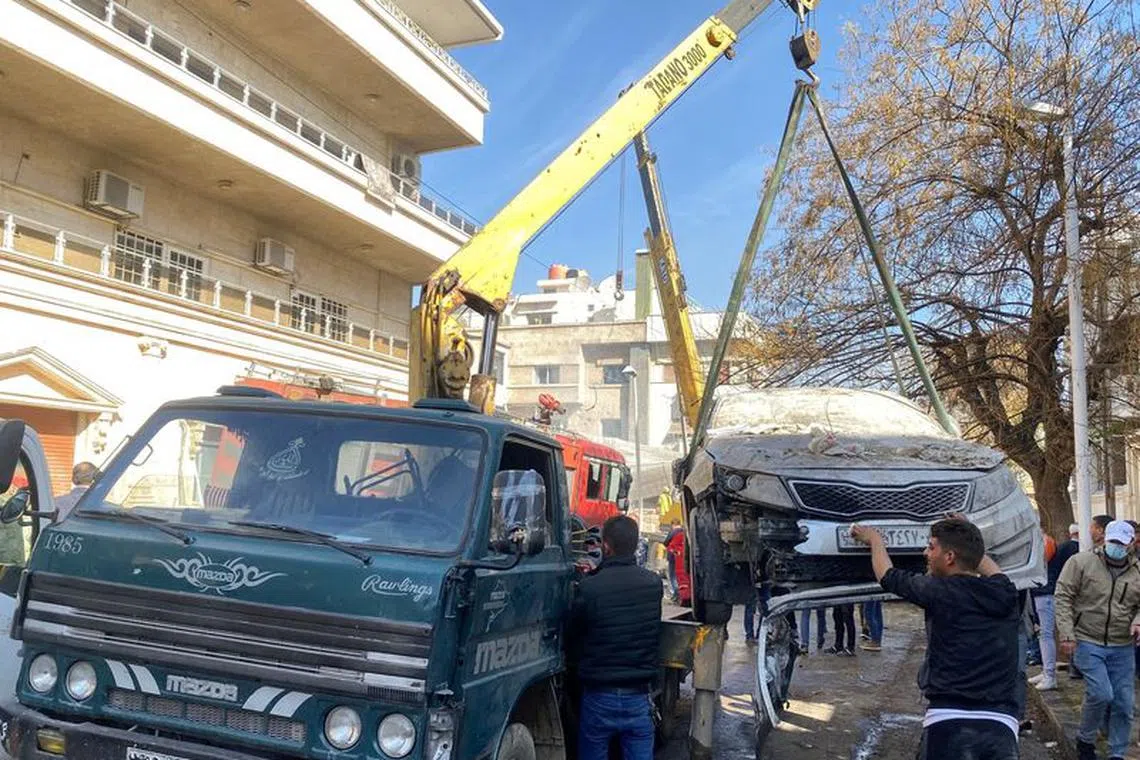Missile attacks across Middle East raise Gaza escalation risks
Sign up now: Get ST's newsletters delivered to your inbox

Security and emergency personnel searching the rubble of a building destroyed in a reported Israeli strike in Damascus, Syria.
PHOTO: AFP
Follow topic:
WASHINGTON/BAGHDAD - Missile attacks in Syria, Lebanon, Iraq and Yemen on Jan 20 threw into sharp focus the increasing risk of the war in Gaza triggering a wider regional conflict pitting Iran and its allies against Israel and the United States.
Iran said five of its Revolutionary Guards were killed in a missile strike
Later on Jan 20, missiles and rockets launched by Iran-backed militants in Iraq,
A number of US personnel were being evaluated for traumatic brain injuries and one Iraqi service member was wounded, it said.
The US also said it targeted a missile that the Houthi group in Yemen was aiming into the Red Sea
The conflict in Gaza began on Oct 7 when Hamas fighters attacked Israeli bases and towns,
Israel pounded targets across the Gaza Strip on Jan 20, while its planes dropped leaflets in the southern area of Rafah
Hamas is part of Iran’s axis of resistance, a regional alliance that also includes Lebanon’s Hezbollah, the Syrian government of President Bashar al-Assad, Shi’ite militia groups in Iraq and the Houthis who control much of Yemen.
Amid increased regional tensions, Iran’s President Ebrahim Raisi vowed to punish Israel for its strike in Syria, calling it criminal and saying it would not go unanswered, according to a statement on the Islamic Republic of Iran Broadcasting.
Three of the Revolutionary Guards officers killed in the Israeli strike were described in Iranian state media with an honorific used only for generals, suggesting the targets were senior commanders.
There was no comment from Israel, which typically does not discuss such attacks publicly.

A crane removing a damaged car from a site that was hit by an alleged Israeli missile strike in Damascus, Syria.
PHOTO: REUTERS
Israel’s intense bombardment of Gaza since Oct 7, which the enclave’s health authorities say has killed more than 25,000 Palestinians, quickly triggered border clashes between Israel and Lebanon’s Hezbollah.
Attack and counter-attack
Over the past three months, Israel has also repeatedly struck at Iranian targets in Syria, while groups in Syria and Iraq have fired at US targets in those countries.
Aside from Gaza, the theatre of conflict with the widest international repercussions has been the Red Sea, where Houthi rebels have repeatedly targeted shipping
US and British strikes over the past week have targeted the Houthis in Yemen.
Saudi Arabia’s Foreign Minister expressed concern that tensions in the Red Sea over Houthi strikes and US counter-attacks could spiral out of control in the Middle East.
“We are very worried,” Prince Faisal bin Farhan Al Saud told CNN’s Fareed Zakaria in an interview that will be aired on Jan 21. “We are in a very difficult and dangerous time in the region, and that’s why we are calling for de-escalation.”
Regional and Iranian sources say Iran and Hezbollah have personnel in Yemen helping to direct attacks on shipping, though the Houthi forces have denied that.
In Gaza on Jan 20, Palestinian fighters battled tanks trying to push back into the eastern suburbs of the Jabalia area in the northern strip, where Israel had started pulling out troops and shifting to smaller-scale operations, residents and militants said.
The Israeli military said aircraft struck militant squads trying to plant explosives near troops and fire missiles at tanks in northern Gaza, and added that it was striking targets throughout Gaza.
On the same day, the Israeli military said that at the end of a kilometre-long, booby-trapped tunnel in Gaza, soldiers discovered cramped cells where Hamas kept about 20 hostages.
No hostages were there when the tunnel was found. REUTERS

